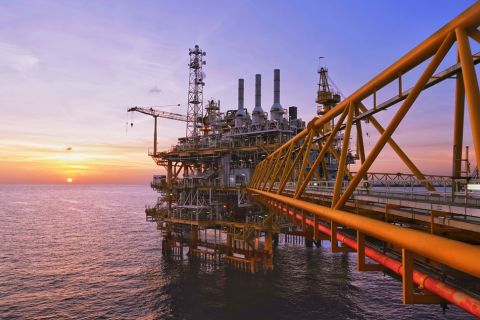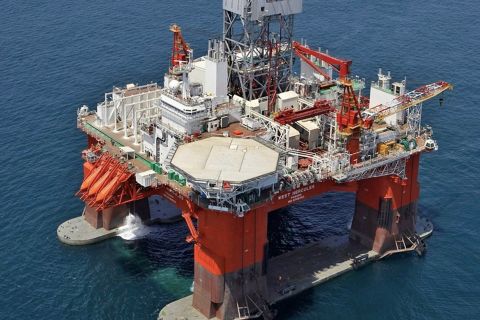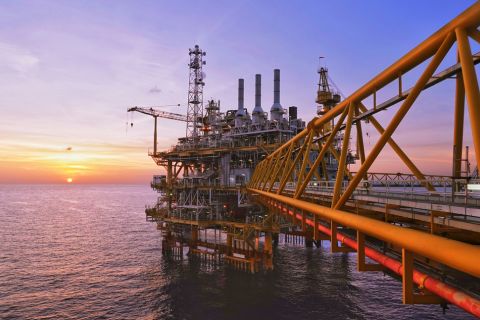
Shell’s offset program with corporate fleets benefits the Qinghai Afforestation Project located on the Qinghai-Tibetan Plateau in China. (Source: Guosheng Wu/Shutterstock.com)
Hart Energy Special Report
Energy ESG: Investing in Our Future
An in-depth report on the state of ESG initiatives in oil and gas. This Energy ESG special report produces a clear picture of ESG today. Learn more
Brought to you by
The superiority of the voluntary market for carbon offsets has been so pronounced that government regulators devising their own compliance regimes for industry have taken to copying and pasting the market’s standards into their own rulebooks.
“The reason this market is starting to work and is becoming more effective is, to begin with, there’s been insufficient government action,” Verra CEO David Antonioli said at Hart Energy’s Energy ESG conference earlier this year.
“We have a crisis on our hands, and we need to do something about it,” Antonioli added. “It’s clear that governments have not taken on sufficient action, and some of the leading corporates have taken the lead in moving the ball forward.”

Carbon offsetting refers to the practice of reducing or mitigating greenhouse-gas emissions to compensate for emissions the company typically produces. Voluntary offsetting allows a corporate entity to show off its green credentials to investors and also positions it ahead of the regulators when the government eventually sets and enforces tougher climate rules.
‘Transition tool’
“Offsets are a transition tool,” Antonioli said. “They will be a small part of the overall mitigation that’s needed, but they are an important part. They create the flexibility that companies need to meet more aggressive decarbonization targets, and they really need to be part of a broader strategy.”
The voluntary carbon market process starts with a company measuring its carbon footprint, he said. Based on the findings, the company will decide how to reduce its operational emissions internally. What are left are known as residual emissions. Compensating for those emissions is where the offset market comes into play.

“What we are seeing, thematically, is that offsets are being recognized more and more as a critical bridging tool into structural decarbonization,” Scobie Mackay, managing director with Macquarie, said during the conference panel discussion. “A lot of the decarbonization efforts made to occur in hard-to-decarbonize sectors are inherently time- and capital-intensive. High-quality offset...really are an important tool for us to have a pragmatic, real-time, right now solution to progress in terms of decarbonization while we wait for some of these lon- ger-term initiatives to take effect.”
Verra, founded in 2007, sets standards for verifying carbon emissions reductions. Its role is to determine whether a company’s offset activity merits carbon credits. Question No. 1: Is it really voluntary? It better be.
“If a project is required by regulation, it’s no longer really credible or eligible to generate a carbon credit because it’s supposed to be implemented by regulation,” Antonioli said.
Defining emissions
Emissions are designated in three ways: Scope 1 emissions are related to a company’s operations, Scope 2 emissions are also related to operations but mostly in terms of the electricity consumed and Scope 3 emissions relate to everything down the value chain.
Ways to address Scope 1 often involve adopting new technologies or processes, Antonioli said. That could be stopping fugitive methane emissions or using renewable energy for extraction activities. There are numerous projects that can earn carbon credits, but natural climate solutions make up a large share if not most of the credits earned. A natural solution could relate to forest management, but it’s not as simple as planting a tree and walking away. A key aspect of earning a verifiable carbon credit is demonstrating permanence.
Achieving permanence requires working with communities to move away from an economic model of cutting down trees. So a company may need to hire local members of the com- munity to patrol the forest or arrange for basic services like education or health care to those communities.
“In many of the projects, the sustain- able development outcomes are critical because it’s not about—in the case of a forest protection project—building a fence around a project,” Antonioli said. “It’s about working with a community to make sure that they get the support they need to be able to transform and move away from using the forest as a source of sustenance.”
Types of offsets
Mackay divided transactional deals into four main types: corporate offsetting, commodity offsetting, asset offsetting and portfolio offsetting. For corporate offsetting, Macquarie believes carbon reduction strategies take time to develop and implement. Those activities are time- and capital-intensive and dependent on technology.
Offsetting, however, is a tool that can be used to gain immediate benefits while the company’s structured decarbonization efforts ramp up and result in absolute emission reductions. Mackay said the number of companies that have made climate commitments has quadrupled just over the past two years.
“More and more corporates are looking to offsets as one of the pillars of their corporate decarbonization strategy,” Mackay said.
Commodity involves bundling conventional commodities with carbon offsets to produce a carbon-neutral commodity product. There are several projects of this type involving carbon-neutral LNG, but Mackay also noted carbon-neutral crude oil projects by Royal Dutch Shell and Occidental Petroleum Corp.
“We see this as a growing phenomenon,” he said. “It’s interesting because it will feed into pricing of commodities and global arb and trade flows, eventually, as a market crystallizes around differentiated commodities.”

With asset offsetting, offsets are bundled with hard assets to create carbon-neutral or reduced carbon assets. This part of the market is still in its early stages, but Mackay believes it has the potential to result in more structural decarbonization. He expects to see more asset offset transactions in the market.
In the portfolio offsetting area, investment managers or financial institutions look at ways to build car- bon-neutral portfolios, both for their own investments and in products offered to clients and consumers.
“We think the bundling of high-quality offsets with portfolios— investment portfolios, asset portfolios—of different categories of classes of underlying investable assets is an emerging theme that we’ll see more and more of,” he said.
Compliance is coming
A company can plant a forest, conserve a forest, capture landfill gas, reduce emissions on orphan wells and plug leaks in the distribution network … but for what? It’s voluntary, right? For now.
“We’re going to see increased regulatory coverage for the oil and gas sector, and in some of those programs, offsets will play a role,” said fellow conference panelist Enric Arderiu Serra,
BP America Inc.’s vice president for low-carbon trading. “That’s what we’re seeing in other parts of the world.”
For example, in Europe an offset mechanism exists in the European Commission’s Fuel Quality Directive that allows a company to gain credits by reducing emissions in its upstream operations and puts them into play down the value chain.
“As these carbon markets develop, there’s going to be more and more opportunities to reduce emissions and be incentivized for doing so,” Arderiu Serra said.

But credits are not always the incentive. For example, in May, Xcel Energy said it would purchase certified low-emission intensity natural gas from Crestone Peak Resources. It is part of Xcel’s strategy to reduce methane and CO₂ emissions.
Certification is provided by Project Canary, a Denver-based methane monitoring and leak detection company.
There are no credits involved, per se, but earning ESG points from investors and the public is valuable in and of itself.
“Energy markets and stakeholders alike are increasingly demanding responsibly sourced natural gas that is certified by a trusted, independent source,” said Project Canary co-founder and CEO Chris Romer in a statement.
Arderiu Serra also suggested incorporating Scope 3 emission reduction into a strategy. Innovative ways to mitigate Scope 3 emissions include Total’s shipping of carbon-neutral LNG and Shell’s offset program with corporate fleets.
“It does need to be part of a wider strategy so that you’re both driving abatement within your own operational boundaries and at the same time helping your customer base access incremental abatement through offsets,” he said. “Over time, I think there are going to be new types of abatements or removals that come into play that play well into the skills that the sector has.”
Recommended Reading
Equinor Receives Significant Discovery License from C-NLOPB
2024-02-02 - C-NLOPB estimates recoverable reserves from Equinor’s Cambriol discovery at 340 MMbbl.
US Drillers Add Oil, Gas Rigs for Second Week in a Row
2024-01-26 - The oil and gas rig count, an early indicator of future output, rose by one to 621 in the week to Jan. 26.
Second Light Oil Discovery in Mopane-1X Well
2024-01-26 - Galp Energia's Avo-2 target in the Mopane-1X well offshore Namibia delivers second significant column of light oil.
CNOOC Sets Increased 2024-2026 Production Targets
2024-01-25 - CNOOC Ltd. plans on $17.5B capex in 2024, with 63% of that dedicated to project development.








